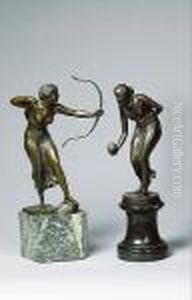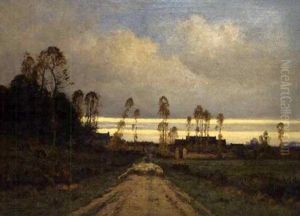Georges Morin Paintings
Georges Morin was a French artist known for his work in the early 20th century. Born on November 20, 1874, in Paris, France, Morin grew up during a period of great artistic innovation and was exposed to the burgeoning art scene of the city. He studied at the École des Beaux-Arts in Paris, where he was influenced by the academic traditions of French art as well as by the new currents of Impressionism and Post-Impressionism that were beginning to take hold.
Throughout his career, Morin worked in various media, including painting, printmaking, and illustration. He was particularly known for his landscapes and scenes of Parisian life, capturing the changing city with a keen eye for light and atmosphere. His works often exhibited a blend of traditional techniques with the freer brushwork and color experimentation characteristic of the Impressionists.
During the early 1900s, Morin exhibited his work at several prominent venues, such as the Salon des Artistes Français, where he received recognition and accolades for his contributions to French art. He also participated in group exhibitions alongside other notable artists of the time, which helped to solidify his reputation within the artistic community.
The outbreak of World War I had a profound impact on Morin, as it did on many artists of his generation. The war's devastation and its aftermath were reflected in a shift in his style, which became more somber and introspective. Nevertheless, he continued to produce art that resonated with the public and his peers.
Morin’s later years were marked by a continued commitment to his art, despite the changing trends and the rise of new movements such as Cubism and Surrealism. He remained somewhat of a traditionalist, dedicated to the representation of the world around him with a sense of honesty and a deep appreciation for the beauty of everyday life.
Georges Morin passed away on July 27, 1950, in his native city of Paris. Although not as widely known today as some of his contemporaries, Morin left behind a body of work that is valued for its contribution to the narrative of French art at a time of great transformation. His paintings are held in various private collections and can be found in museums across France, where they continue to be studied and appreciated by art historians and enthusiasts alike.



